Primitivo: Wine Grape, Best Wines 2025, Zinfandel Connection
Primitivo is an Italian red grape genetically identical to the American Zinfandel (or Zin). It has come a long way from being used in inexpensive red wine blends, to being the star grape of some exceptional varietal wines today!
Let’s find out all about the Italian Primitivo, including its history, wine regions, and winemaking process. We’ll also look at some of the best Primitivo wine bottles you can buy in 2023.
And if you want to build a wine collection, we’ll tell you the easiest way to invest in fine wine.
Further reading
- Curious about investing in fine vintage wines? Begin your journey with this Detailed Wine Investment Guide.
- Or, you might want to explore more popular grape varieties like Merlot, Carignan or Pinot Noir?
A Brief Intro to Primitivo
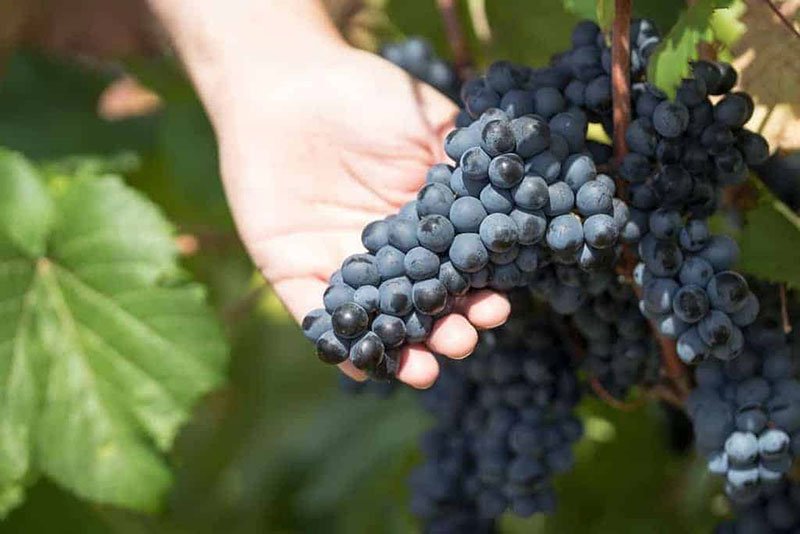
Primitivo is a dark-red, flavorful grape that produces highly acidic wines with moderate tannins. It is the third-most cultivated grape variety of the Puglia region in southern Italy.
The name ‘Primitivo’ has its roots in the Latin ‘primativus’ and the Italian ‘primaticcio,’ both of which mean early ripening. This feature of the grape gives the Primitivo wines more structure and lends it the Puglian name, ‘Mirr Test’ (hard wine.)
This grape variety is used to produce a range of wines, including Primitivo di Manduria and the sweet Dolce Naturale.
Primitivo is often confused with the American Zinfandel grape, but there are subtle differences.
Let’s take a closer look.
Difference Between Primitivo and Zinfandel
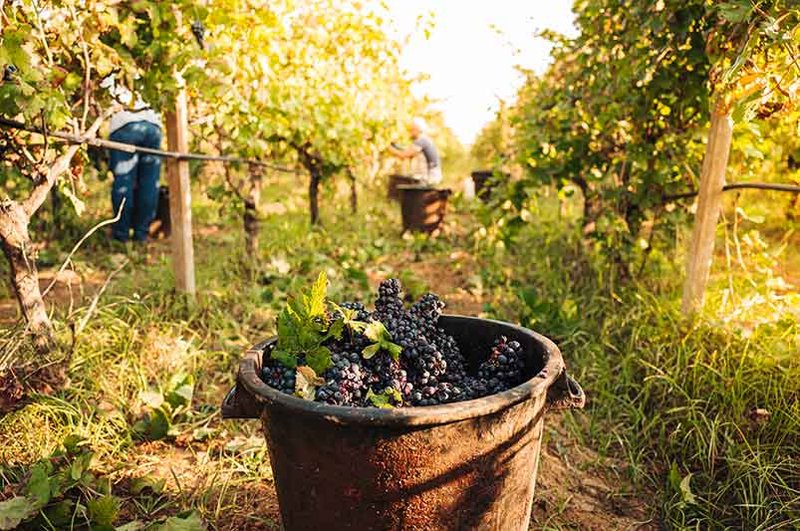
Primitivo and Zinfandel are genetically identical clones of the Croatian grape, Crljenak Kastelianski, as proven by DNA analysis.
So how are they different from each other?
- Regions grown: Primitivo is mainly grown in Italy with smaller plantations in other regions.
On the other hand, the biggest Zinfandel plantations are in California (in Lodi, Napa Valley, Dry Creek Valley), and in parts of New York.
Interestingly, in the US, no winery is permitted by law to label its Zinfandel wines Primitivo, or vice versa. Meanwhile in Italy, winemakers are allowed to use both Primitivo and Zinfandel as synonyms on their labels.
- Nature of the red grape: Zinfandel is a red grape variety that produces well-ripened berries packed with robust flavors. On the other hand, the early harvest of Primitivo in the vineyard results in more muted flavors compared to Zinfandel.
Some field studies show that the Primitivo vine has a slight edge over Zinfandel. In addition to higher yields, the early maturity of Primitivo grapes reduces their propensity for bunch rot.
- Wine styles: Another major difference between Primitivo and Zinfandel lies in the wine styles.
Zinfandel wines are sweeter and smoother with a higher alcohol content. It is also used to make a rose wine called White Zinfandel. Primitivo wines are jammy and intense with chewy tannins.
- Taste: Primitivo wine also possesses more dried fruit tasting notes, a lighter body, and balanced acidity compared to its American counterpart.
Now, let’s take a look at the evolution of Primitivo over the years.
A Quick Look At the Evolution of the Primitivo Grape
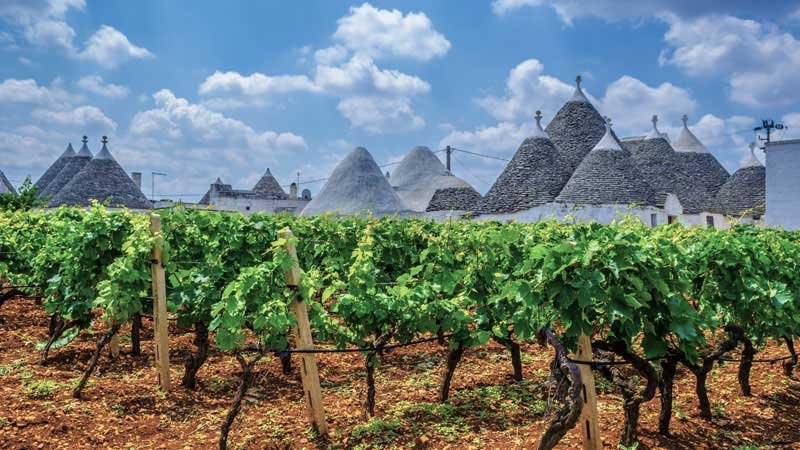
The origins of the Primitivo wine grape can be traced back to Croatia in the 1700s. It is believed the grape was brought to the Puglia region across the Adriatic from its Croatian vineyards.
In the 18th century, the Italian monk Filippo Francesco Indellicati coined the name Primitivo, inspired by the grape’s early ripening nature. Before that, Primitivo was known by different names, including Zagarese, Tribidrag, and Crljenak Kasteljanski.
This Puglian grape arrived in the US at the start of the 19th century, and it came to be called Zinfandel. The new name sparked debates among wine experts in Italy and the US.
However, it grew immensely popular in the US in the 1980s. (The White Zinfandel wine accounts for nearly 10% of all wines sold in the US today.)
In 1988, a movement to uproot Primitivo and other vines almost led to a wipeout of the grape’s vineyards in Italy. At the same time, Primitivo’s American twin, the California Zinfandel, continued to flourish.
The appeal of this wine grape in the US (especially in Napa Valley) became its saving grace and helped rejuvenate the variety.
Today, Primitivo has gradually transformed from a mere blending grape to an integral component of varietal wines among grower groups in southern Italy.
Now let’s dive into the major Primitivo wine-producing regions of the world.
Primitivo Wine Regions

The main Primitivo wine regions are:
- Italy: Primitivo is predominantly grown in the Puglia (Apulia) region on the south coast, Veneto, and other areas of Italy. In the past, it was also used as a blending grape in Tuscany and Piedmont.
The four major appellations of the Primitivo grape in Italy are Primitivo di Manduria DOC, Primitivo di Manduria Dolce Naturale DOCG, Gioia del Colle Primitivo DOC, and Salento IGT.
- United States: The prominent Zinfandel grape vineyards in the US are in Dry Creek (Sonoma), Lodi, and the Sierra Foothills in California. Smaller plantations of the Californian Zinfandel are found in Santa Clara Valley, San Luis Obispo, Napa Valley, and Russian River Valley as well.
- Other regions: The original home ofPrimitivo is Croatia, but today it’s only grown in a small area, mainly in the island of Hvar. Other smaller Primitivo plantations can be found in Mexico, Western Australia (Mudgee in New South Wales), South Africa, and France (Côtes de Thongue.)
Next, let’s walk through the viticulture and winemaking of the Primitivo grape.
Primitivo Viticulture and Winemaking

The early ripening Primitivo vine produces low to medium yields depending on the grower and terroir. It’s easily susceptible to temperature fluctuations and spring frosts.
The Primitivo vines in Manduria grow on iron-rich clay soils mixed with large calcareous rocks. Primitivo also thrives on sandy soils, black soils from alluvial deposits, and volcanic and calcareous soils.
Conventionally, the Primitivo vine is alberello trained (to grow like single trees), but recently some vineyards have adopted trellis systems like Guyot or cordon training.
The most undesirable feature of Primitivo is its tendency to over-ripen quickly, resulting in yields with low acidity and reduced flavor. The grape skin is thin and fragile, making it vulnerable to moulds and humidity.
How is Primitivo Wine Made?
During vinification, the grapes harvested from the Primitivo vine are destemmed, crushed, and fermented in stainless steel tanks at the winery.
After the primary fermentation, the wines are macerated for 20 days. The winemakers then transfer them to French barrels for malolactic fermentation.
Primitivo wines develop balanced tannin and an intense hue when aged in oak casks. The wine is usually aged for about seven months before bottling.
Primitivo Wine Taste and Food Pairings
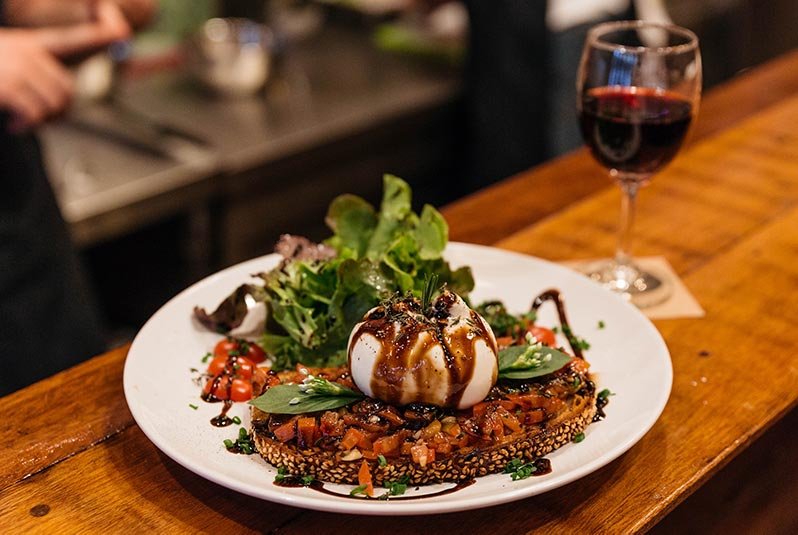
Primitivo wine has dominant cherry tasting notes and a distinct spiciness, reflective of the terroir. Primitivo has a subtle licorice and pepper flavor with a hint of Mediterranean herbs.
It has an intense aroma of sweet vanilla, blue flowers, sour and black cherry, and an alcohol content of 14-18% ABV.
The wine from this Puglian grape is exceptionally versatile and goes well with roasted lamb, pasta, cheeses, eggplant parmesan, pizza, and even spicy curries.
Time to explore some of the best Primitivo wines you can buy this year!
Best Primitivo Wines to Buy in 2023
Here’s a list of some of our favorite picks for Primitivo wine:
1. Gianfranco Fino 'Es' Primitivo di Manduria, 2007

This great wine from Primitivo di Manduria DOC has a dark red color, velvety tannins, and a tantalizing aroma of black cherry, cassis fruit, and spice.
Price of Gianfranco Fino 'Es' Primitivo di Manduria, 2007: $195
2. Gianfranco Fino 'Es' Primitivo di Manduria, 2011

This Manduria DOC wine is dark ruby with a nose of cherry, herbs, and chocolate. The delicious palate is complex, with hints of spice, vanilla, and raspberry fruit.
Price of Gianfranco Fino 'Es' Primitivo di Manduria, 2011: $143
3. Gianfranco Fino 'Es piu Sole' Primitivo di Manduria Dolce Naturale, 2015
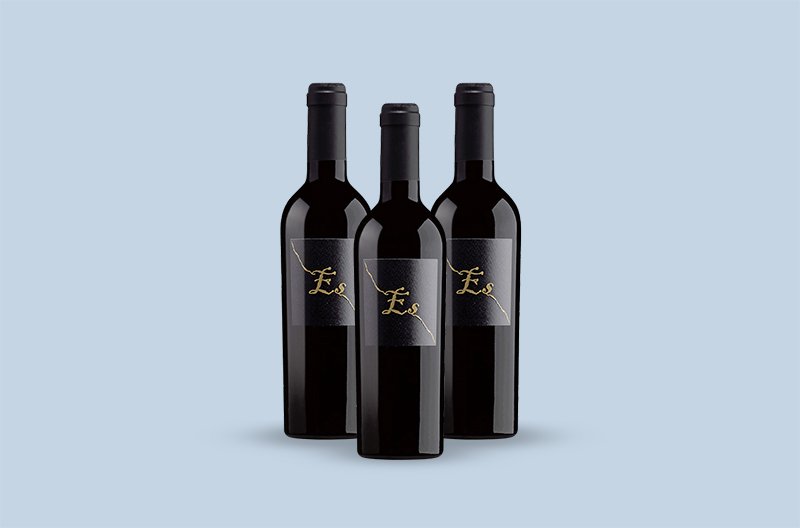
Here’s a wine with a bold fruit jam flavor and smoky spice hints. It is a full-bodied wine with a high alcohol content of 15% ABV.
Price of Gianfranco Fino 'Es piu Sole' Primitivo di Manduria Dolce Naturale, 2015: $127
4. Schola Sarmenti Diciotto Salento Rosso IGT, 2012
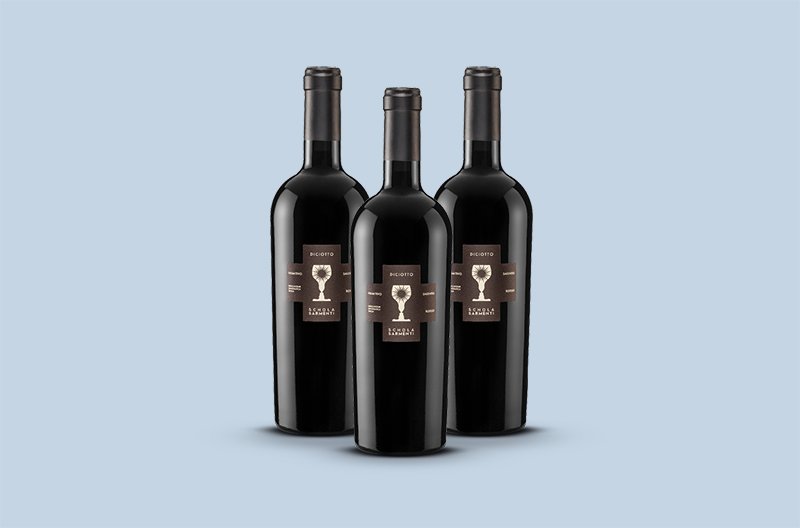
This dark-hued, layered Primitivo wine has Meditteranean flavors of lemon, apricot, and pepper. The wine is composed of smoky fruit aromas, high alcohol content, and velvety tannins.
Price of Schola Sarmenti Diciotto Salento Rosso IGT, 2012: $100
5. Tenute Chiaramonte Primitivo Gioia del Colle Riserva, 2014
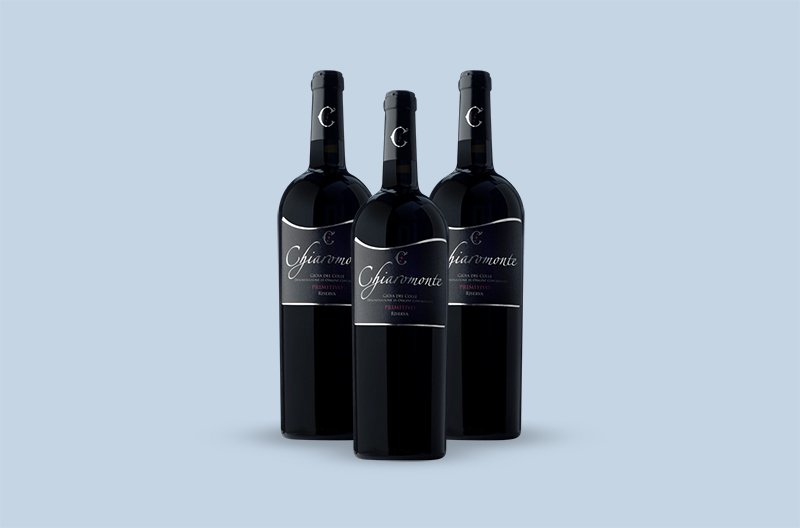
This is a dense and full-bodied Italian wine with rich tasting notes of ripe black fruit, prune, blackberry and cassis. Its balanced palate is revealed after decanting for a short time and can be enjoyed with roasted lamb, eggplant parmesan, and pasta.
Price of Tenute Chiaramonte Primitivo Gioia del Colle Riserva, 2014: $88
6. Tenute Chiaramonte Muro Sant'Angelo 'Contrada Barbatto' Primitivo Gioia del Colle, 2011

This great wine is dark burgundy in color and has an intense nose of strawberry, black cherry, cinnamon, and fig. It is full-bodied with high tannin levels and balanced acidity. The flavor profile includes hints of dark chocolate, licorice, and tobacco.
Price of Tenute Chiaramonte Muro Sant'Angelo 'Contrada Barbatto' Primitivo Gioia del Colle, 2011: $82
7. Luccarelli Old Vines Primitivo di Manduria, 2015

This Italian wine has sugary ripe fruit flavors of cranberry offset by leather, oak, mushrooms, and blackberry. It has velvety tannin and a strong aroma of smoke and cassis.
Price of Luccarelli Old Vines Primitivo di Manduria, 2015: $53
8. Morella La Signora Primitivo Salento IGT, 2015

This dark red wine has a bouquet of sweet wood and fruity aromas. Its flavor profile is equally varied, with hints of plum, cherry, tea, and black fruit cassis.
Price of Morella La Signora Primitivo Salento IGT, 2015: $53
Are you wondering about the aging potential of Primitivo wines?
Read on.
Does Primitivo Wine Age Well?
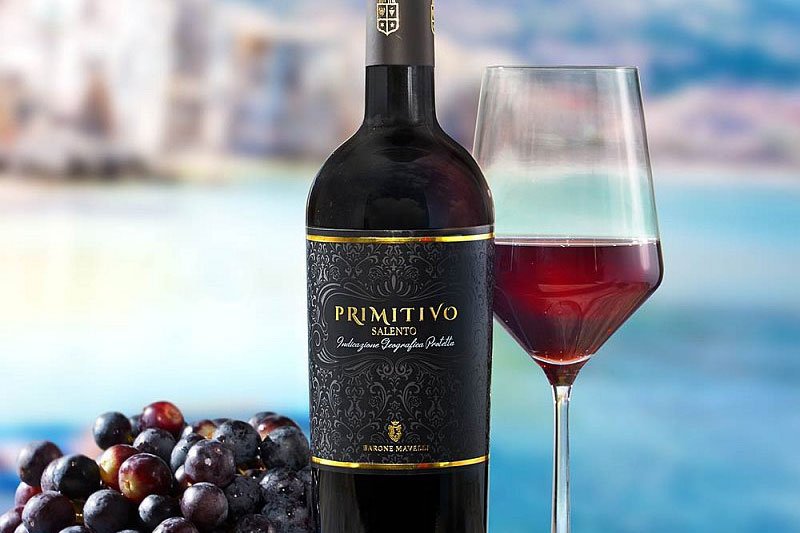
Primitivo wines are best served young. Wines aged 5-6 years offer a flavorful palate, but some bottles can be aged for around a decade. On average, Italian Primitivo wines develop better in the cellar than the California Zinfandel vintages.
If you wish to enjoy an exceptional Primitivo, you could get a bottle from a boutique wine store or wine website.
But if you’re eager to invest in more expensive, investment-grade wine, you should do it through a reputed wine investment firm like Vinovest.
Build Your Wine Collection With Vinovest

Vinovest is an online wine investment firm that helps you buy and sell high-end wines that often outrank the market.
And if you want to enjoy a bottle, Vinovest ensures quick and easy shipping to your doorstep.
How Does It Work?
- Sign up on the Vinovest website.
- Answer a questionnaire to better reveal your investing style.
- Maintain a minimum balance of $1,000 in your account.
- Depending on your investment preferences, Vinovest will identify the best investment wines for your portfolio.
Why Should You Invest in Wine Through Vinovest?
Vinovest offers multiple benefits to wine enthusiasts and wine investors.
These include:
1. Easy Buying and Selling Using AI-driven Technology
Vinovest’s Artificial Intelligence-based platform makes it super easy to buy fine Cabernet Sauvignon, Pinot Noir, and other collectible wines from anywhere in the world.
2. Best Prices
Vinovest buys authentic wines from trusted winemakers, wine exchanges, and wine merchants, eliminating intermediaries - so you get your wines at great prices!
3. Curated Portfolio by an Expert Wine Advisory Team
No problem if you aren’t a wine specialist. Vinovest has an expert team of data scientists and sommeliers who will help you build a high-performance wine portfolio.
4. Authenticity and Provenance
With Vinovest, you’re assured of your wine’s authenticity. This is done by tracing it’s provenance even before you add the bottle to your portfolio.
5. Optimal Storage
Vinovest stores your Cabernet Sauvignon, Syrah, or any other wine in bonded warehouses. These storage facilities maintain optimal temperature, light, humidity, and vibration levels all the time.
6. Comprehensive Insurance and Security
Vinovest offers you a full insurance policy for your portfolio at market value.
All of its storage facilities are equipped with 24/7 security cameras that keep watch over your wine collection. The power backups at the warehouses maintain ideal storage conditions in case of power failures.
7. Tax Advantages
The bonded warehouses charge no excise duty and VAT. This helps Vinovest pass on all tax advantages to you.
8. Deep Network
With Vinovest, you get access to a vast network of upcoming vineyards, private wine company sales, and limited vintage releases. You’ll also get to participate in wine tastings organized by celebrated winemakers.
Primitivo Wine: A Sensational Red To Light Up Any Party

Primitivo produces a variety of exceptional single varietals and blended wines. If the full-bodied, highly acidic, and seductive tasting notes of a Primitivo wine excites you, go ahead and buy yourself a bottle or two.
And, if it's the investment-grade wines that pique your interest, start your exciting journey into wine investing by signing up with Vinovest today!



